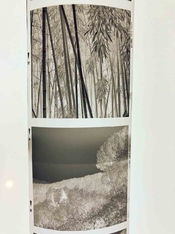dirk_van_damme
Member
I would like to thank everyone for the contributions during our discussion and I would like apologize for the delay in providing my feedback and final findings.
Material and Development Process:
Summary of the Problem:
1. for different film/developers combination, after development a dark line/zone appears across the whole width of the film - see jpg
View attachment 366131
My Findings:
 of ignoring such a important and basic element in film development I have to admit that I have learned to never underestimate the importance of agitation method in the development process.
of ignoring such a important and basic element in film development I have to admit that I have learned to never underestimate the importance of agitation method in the development process.
Again I thank you all for your help and apologize for taking your time on helping to resolve such a basic beginners-issue
Material and Development Process:
- The camera used is a Rollei Hy6/M2, utilizing 66 format black and white film, thoroughly tested and checked by DW-Photo and Paepke-fototechnik with no errors found.
- Film development is carried out using a tank by myself.
- Upon removing the film from the cassette, I ensure it is well protected from light in a black bag until development.
- Development temperature is consistently maintained around 20°C.
- The darkroom is fully covered against any light.
- I consistently employ the same agitation process.
Summary of the Problem:
1. for different film/developers combination, after development a dark line/zone appears across the whole width of the film - see jpg
View attachment 366131
My Findings:
- In August, I couldn't identify/pinpoint a specific cause for the issue. I believed I followed all procedures correctly which, in retrospect, was completely not true. I left the problem unresolved starting a new project in September, which involved working with Bergger PMK and HP5+ and FP4+ films. Now PMK requires quite heavy agitation which I did consciously. the issue did not appear but only on the last film processed in November 2023. I looked into the agitation process, as this was the only differing factor.
- I discovered that the problem was caused by an completely insufficient quarter twist of the tank during inversions.
- Additional validation of this I found in John Finch's book, "The Art of Black and White Developing" see http://www.pictorialplanet.com/.
- I adjusted my agitation method which is now, each time it is required I do a quarter twist of the tank whilst turning it upside down
- I tested it with FX-39II and RPX-100 film, which resulted in no issues at all.
- Since then, all my films have been free of the issue.
 of ignoring such a important and basic element in film development I have to admit that I have learned to never underestimate the importance of agitation method in the development process.
of ignoring such a important and basic element in film development I have to admit that I have learned to never underestimate the importance of agitation method in the development process.Again I thank you all for your help and apologize for taking your time on helping to resolve such a basic beginners-issue















